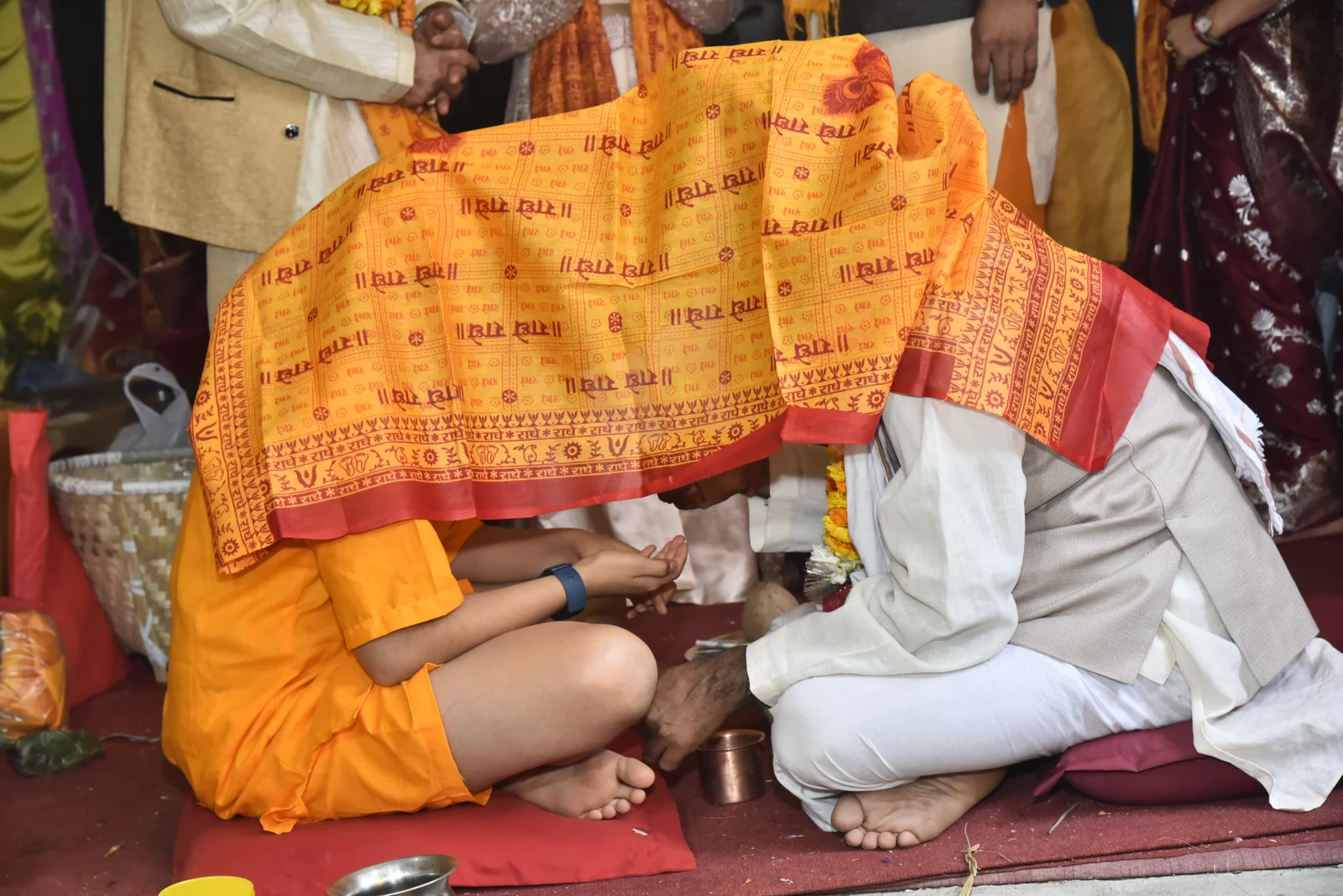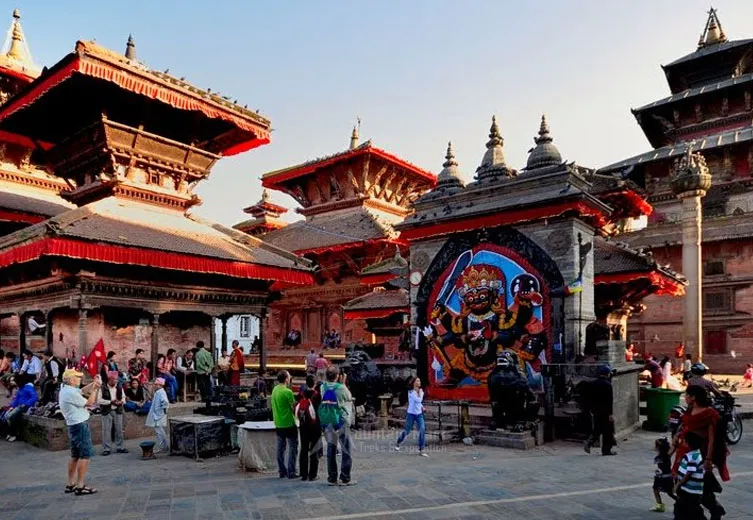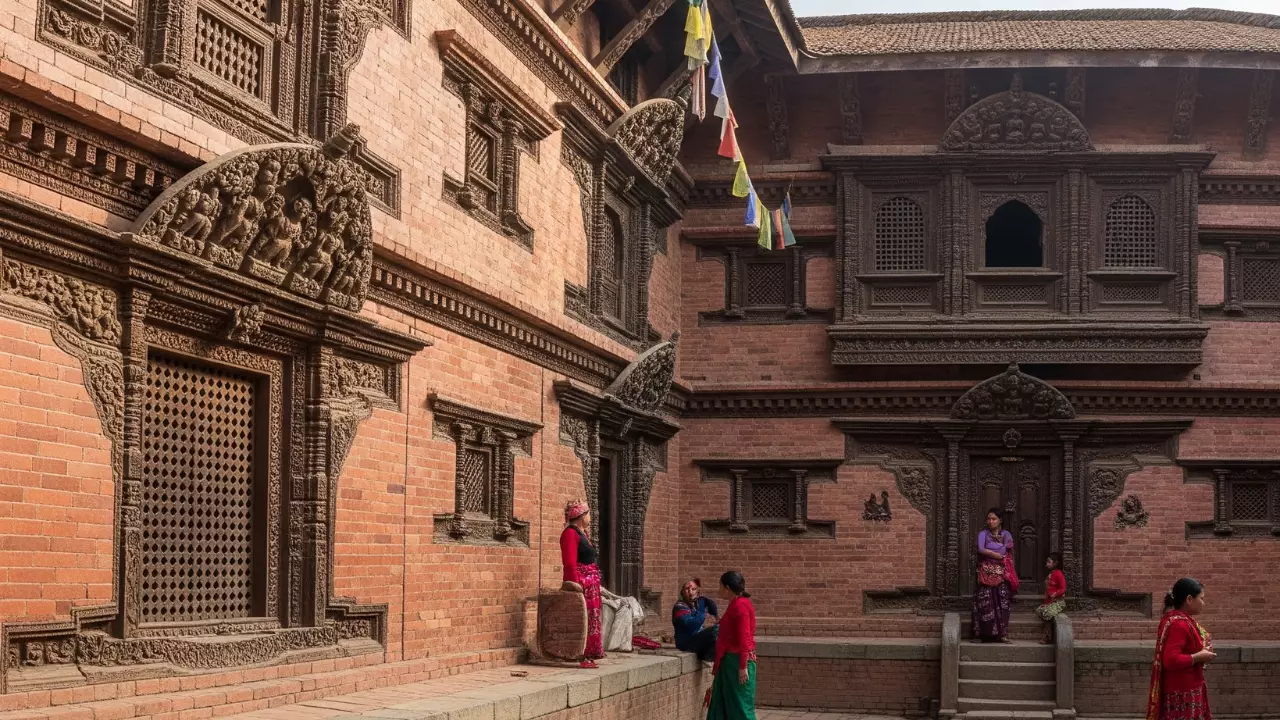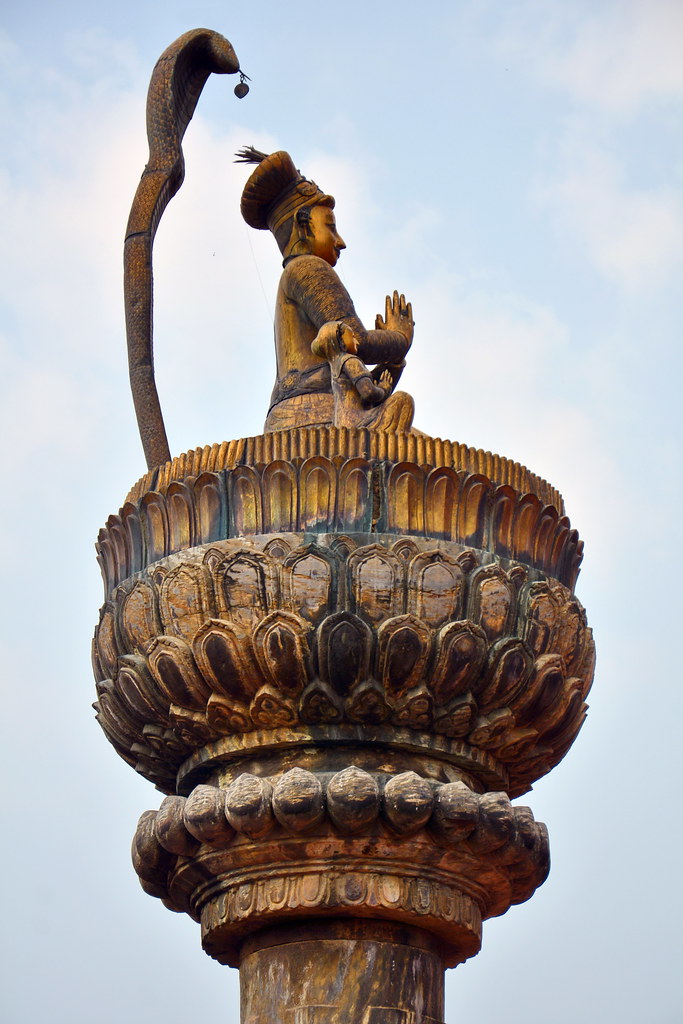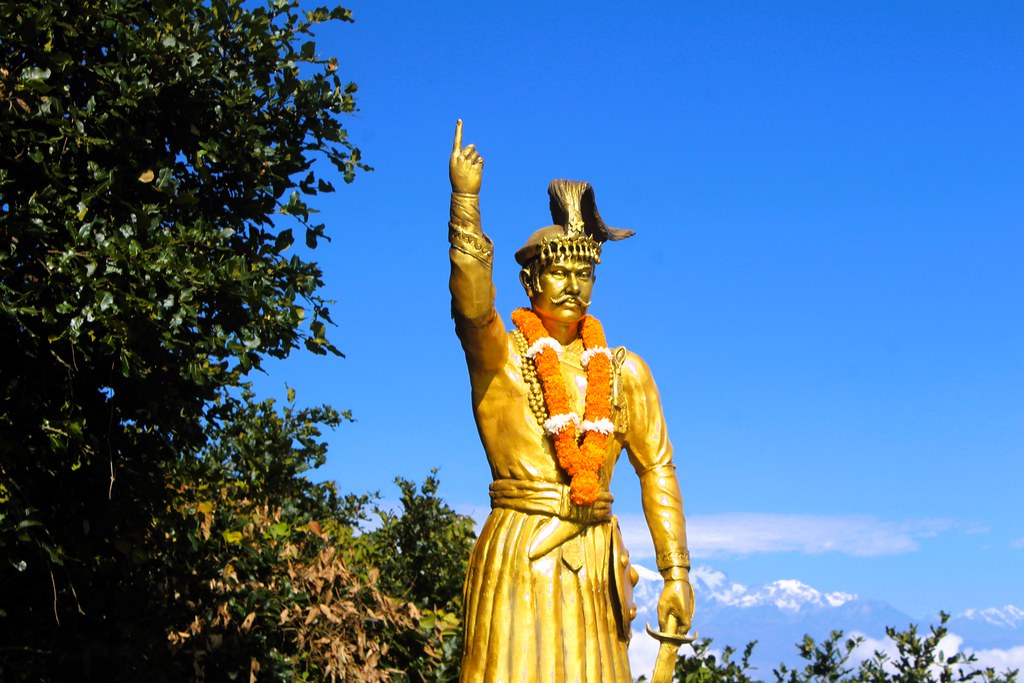Share this Article
Krishna Ashtami, also known as Janmashtami, is one of the most revered festivals in Nepal. It celebrates the birth of Lord Krishna, the eighth incarnation of Lord Vishnu, whose life and teachings have deeply influenced Hindu philosophy, culture, and spirituality. In Nepal, Krishna Ashtami is observed not only as a religious festival but also as a cultural event, blending devotion, family traditions, community participation, music, dance, and ethical reflection. From the historic cities of Patan, Bhaktapur, and Janakpur to smaller towns and villages across the country, this festival is celebrated with unmatched enthusiasm and reverence.
Historical and Mythological Background
The origins of Krishna Ashtami are rooted in ancient Hindu mythology, particularly the stories told in the Bhagavata Purana and the Mahabharata. Lord Krishna was born to Devaki and Vasudeva in Mathura, India, under extraordinary circumstances. King Kansa, Devaki’s brother, had been warned by astrologers that her eighth child would eventually kill him. To prevent this prophecy, Kansa imprisoned Devaki and Vasudeva and tragically killed their first six children. Krishna’s birth, however, occurred miraculously in a prison cell, and he was immediately transferred to Gokul, where he was raised by his foster parents, Nanda and Yashoda.
Krishna’s childhood is filled with stories of divine intervention, playful mischief, and heroic deeds. From stealing butter to lifting the Govardhan Hill to protect villagers from a storm sent by Indra, Krishna’s life is a testament to courage, love, devotion, and righteousness. In Nepal, these stories are retold with devotion during Krishna Ashtami, emphasizing the victory of good over evil and the embodiment of dharma.
Timing and Observance in Nepal
Krishna Ashtami is celebrated on the eighth day of the dark fortnight in the month of Bhadra according to the Hindu lunar calendar, usually falling in August or September. Devotees closely observe the exact timing of Krishna’s birth, traditionally at midnight, and prepare in advance for the festival. Across Nepal, temples dedicated to Krishna become centers of devotion, with Patan’s Krishna Mandir, Janakpur’s Janaki Mandir, and numerous smaller village shrines witnessing the largest gatherings. In Patan, thousands of devotees gather at the Krishna Mandir to participate in puja rituals, while in Janakpur, community plays and cultural celebrations accompany the religious observances.
Religious Significance
Krishna Ashtami is deeply spiritual, offering devotees a chance to reflect on Lord Krishna’s teachings and divine qualities. Krishna represents wisdom, love, courage, and righteousness, and his life stories provide guidance on moral and spiritual values. The festival symbolizes the triumph of dharma over adharma, as exemplified by Krishna’s victory over King Kansa. Observing fasting, performing night-long vigils, and participating in temple rituals allow devotees to purify the body and mind while reaffirming faith in righteousness. Devotees also believe that worshiping Krishna on this day brings blessings, prosperity, and spiritual growth. In many households and temples across Nepal, the recitation of verses from the Bhagavad Gita during Ashtami reinforces the festival’s philosophical and ethical dimensions.
Customs and Rituals
In Nepal, Krishna Ashtami is observed with elaborate rituals and customs that blend devotion, family traditions, and community celebrations. One of the central practices is fasting, which varies from partial abstinence to complete avoidance of food, with only fruits, milk, and dairy products consumed. This fasting is accompanied by meditation, prayers, and devotional singing, particularly during the night-long vigil called Jagaran, which lasts until midnight, the traditional hour of Krishna’s birth. Families and communities come together to sing bhajans and recite mantras, creating a spiritually charged atmosphere.
Homes and temples are decorated beautifully for the occasion. Devotees prepare small shrines with Krishna idols placed in cradles, symbolizing his birth. Colorful flowers, rangoli designs, and oil lamps enhance the festive ambiance. In addition to worship, children often dress as Krishna and Radha, participating in plays and performances that depict Krishna’s childhood acts and miracles. Offerings of milk, butter, fruits, and sweets are placed before the deity and later distributed as prasad among family members and neighbors, reinforcing the spirit of sharing and devotion.
In some communities, playful traditions similar to India’s Dahi Handi are observed, where groups of children and youths form human pyramids to reach high-hanging pots of curd or butter, recreating Krishna’s mischievous exploits. Cultural programs, including Raas Leela performances, folk dances, and storytelling sessions, depict Krishna’s interactions with the gopis, his miracles, and heroic deeds. These performances not only entertain but also educate children and adults about Krishna’s virtues and moral teachings.
Regional Variations
While the core religious significance of Krishna Ashtami remains consistent, regional practices in Nepal display notable variations. In Patan and Bhaktapur, temple rituals and night-long bhajan sessions are emphasized, with grand floral decorations and lighting adorning the temples. In Janakpur and other Terai regions, the focus is on community-based performances, plays, and shared prasad meals. In hilly and rural regions, families observe the festival in a more intimate setting, performing home-based pujas and orally narrating Krishna’s stories. Despite these differences, the festival fosters unity, devotion, and cultural continuity across the nation.
Food and Offerings
Food plays a central role in Krishna Ashtami celebrations, symbolizing devotion and joy. Dishes prepared for the festival include milk-based sweets such as kheer, ladoo, peda, and rabri, reflecting Krishna’s fondness for dairy products during his childhood. Fresh butter, fruits, and other seasonal delicacies are offered to the deity and later distributed as prasad. The preparation and sharing of these offerings reinforce communal bonds and allow devotees to express their love and reverence for Krishna.
Social and Cultural Dimensions
Krishna Ashtami serves not only as a religious observance but also as a vital social and cultural event. Families come together to perform rituals, prepare food, and celebrate, strengthening familial ties. Communities organize cultural performances, storytelling sessions, and devotional singing, fostering social cohesion and collective participation. Children’s involvement in dressing up as Krishna and Radha or performing skits ensures that younger generations remain connected to cultural traditions and learn moral lessons. In this way, Krishna Ashtami contributes to both spiritual growth and the preservation of Nepali cultural heritage.
Spiritual Lessons from Krishna’s Life
The celebration of Krishna Ashtami offers an opportunity for devotees to reflect on Krishna’s spiritual teachings. His life exemplifies selflessness, courage, righteousness, and divine love. The Bhagavad Gita, imparted by Krishna to Arjuna, guides individuals toward ethical living, detachment, duty, and devotion. By observing Krishna Ashtami, devotees are reminded to cultivate virtues such as compassion, humility, and devotion in their daily lives, reinforcing both personal and communal moral values.
Modern Celebrations and Media Influence
In contemporary Nepal, Krishna Ashtami celebrations have expanded beyond traditional rituals. Television channels broadcast temple ceremonies and cultural programs, and social media platforms are filled with videos of bhajan sessions, temple decorations, and community plays. Schools and colleges organize events such as Krishna-Radha dressing contests, devotional singing competitions, and performances depicting Krishna’s life, making the festival accessible to younger audiences and promoting cultural education. The combination of traditional observances with modern media ensures that Krishna Ashtami remains relevant while preserving its spiritual essence.
Environmental and Ethical Awareness
Increasingly, communities in Nepal are adopting environmentally conscious practices during Krishna Ashtami. Eco-friendly celebrations involve using natural flowers and biodegradable decorations, avoiding plastic, and encouraging local and organic food for offerings. These practices reflect the principle of ahimsa, or non-violence, which Krishna emphasized, and demonstrate respect for nature while maintaining the festival’s spiritual and cultural significance.
Temple Stories and Community Experiences
Krishna Mandir in Patan, a 17th-century stone temple adorned with intricate carvings depicting Krishna’s life, becomes a hub of devotion during Krishna Ashtami. Devotees participate in purnahuti rituals, offering milk, butter, and sweets, while Raas Leela performances showcase Krishna’s divine and playful exploits. In Janakpur, local youths perform dramas portraying Krishna’s childhood and heroic acts, accompanied by communal prasad feasts. In rural villages, home-based pujas and community bhajan sessions create intimate yet meaningful celebrations, emphasizing both family and social cohesion. Across Nepal, these practices ensure that the spiritual, cultural, and educational dimensions of Krishna Ashtami are preserved and passed on to future generations.
Conclusion
Krishna Ashtami is a festival that embodies devotion, morality, cultural heritage, and social unity. Celebrating Krishna’s birth reminds devotees of the triumph of good over evil, the importance of righteousness, and the power of love and devotion. In Nepal, temple rituals, fasting, night vigils, cultural performances, and communal sharing of prasad together create a rich tapestry of spiritual and social experiences. The festival strengthens family and community bonds, teaches children moral and ethical lessons, and fosters cultural continuity.
Krishna Ashtami is more than a religious observance; it is a celebration of divine wisdom, moral courage, and cultural identity. From temple ceremonies in Patan to community gatherings in Janakpur and rural homes across the hills, the festival unites people in devotion, illuminates hearts with spiritual joy, and preserves the timeless teachings of Lord Krishna. By honoring Krishna’s life and values, Nepalis reaffirm their connection to dharma, love, and ethical living, ensuring that the wisdom and joy of Krishna Ashtami remain vibrant for generations to come.
Categories:
History & Heritage
Tags:
KrishnaAshtamiNepal
,
BhagavadGitaTeachings
,
DevotionAndCulture



